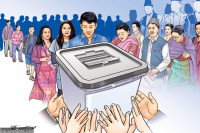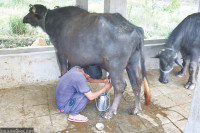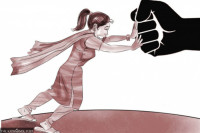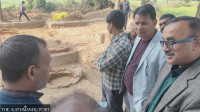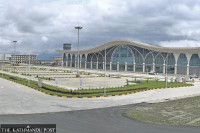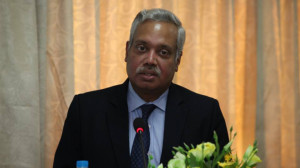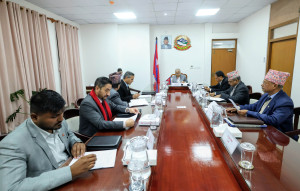National
90 families at high risk after rains trigger groundslip across entire hillside in Ramechhap
Houses have developed cracks or collapsed, and new springs have emerged across the villages.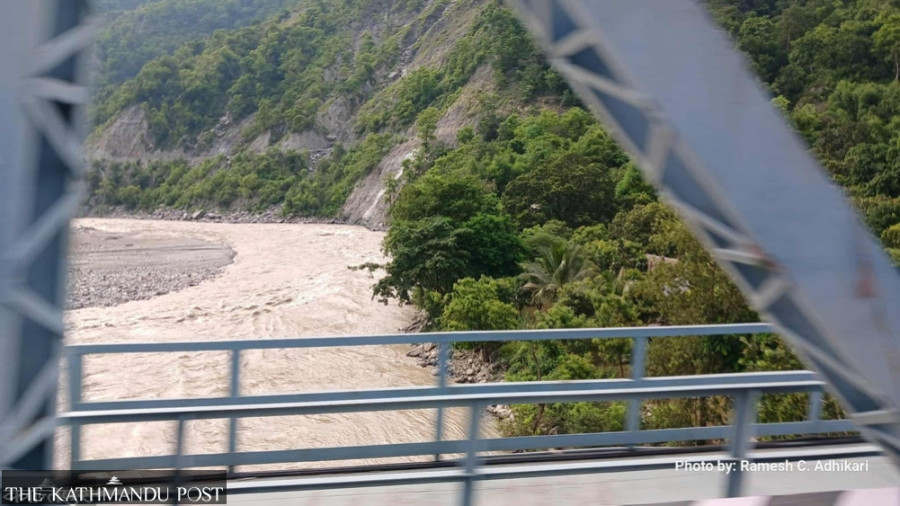
Nawaraj Shrestha
The incessant rainfall between October 3 and 5 has triggered massive ground movement in ward 3 of Sunapati Rural Municipality in Ramechhap district, putting around 90 families from four villages at high risk as the land beneath their homes continues to slide.
Residents of Keureni, Saune, Nagasiwa and Chyamdung villages have reported deep cracks in their homes and shifting soil since a landslide originating from the Khani Khola stream began eroding the slopes beneath the Sunapati hill. “The ground has started moving downhill again. New springs have emerged everywhere, and the soil in the area is sliding,” said Ram Shrestha, a resident of Saune. “This area has always been prone to landslides, but last year’s disaster made it worse. After the recent continuous rains, the land has begun to give way.”
The growing cracks have made most houses unsafe. “Many homes in Keureni have already collapsed, and those still standing are riddled with cracks,” said Roj Thing, another local resident. “People are terrified. Some have already moved to safer areas, while others have nowhere else to go.”
According to Suresh Kumar Shrestha, the chief administrative officer of Sunapati Rural Municipality, the local disaster management committee has begun identifying the affected households after an on-site inspection. “The landslide that started from Khani Khola [stream] has begun to erode the base of the upper settlements,” he said. “The main danger zones are in Keureni, Saune, and Chyamdung. Relocation is now the only option.”
A municipal committee led by ward 3 chairman Kul Bahadur Thing has been formed to assess risks and coordinate relocation efforts. Preliminary reports indicate that the soil movement has intensified, with multiple new water sources emerging across the hillside, making further collapses likely.
Geologists and disaster experts have long identified Ramechhap as one of the most landslide-prone districts in Nepal. Locals recall that several families were forced to relocate after a similar landslide in 1990. “The slope had stabilised for years, but the rains last year reactivated it,” said Shrestha. “Now the cracks are back, and the ground keeps moving.”




 6.12°C Kathmandu
6.12°C Kathmandu
